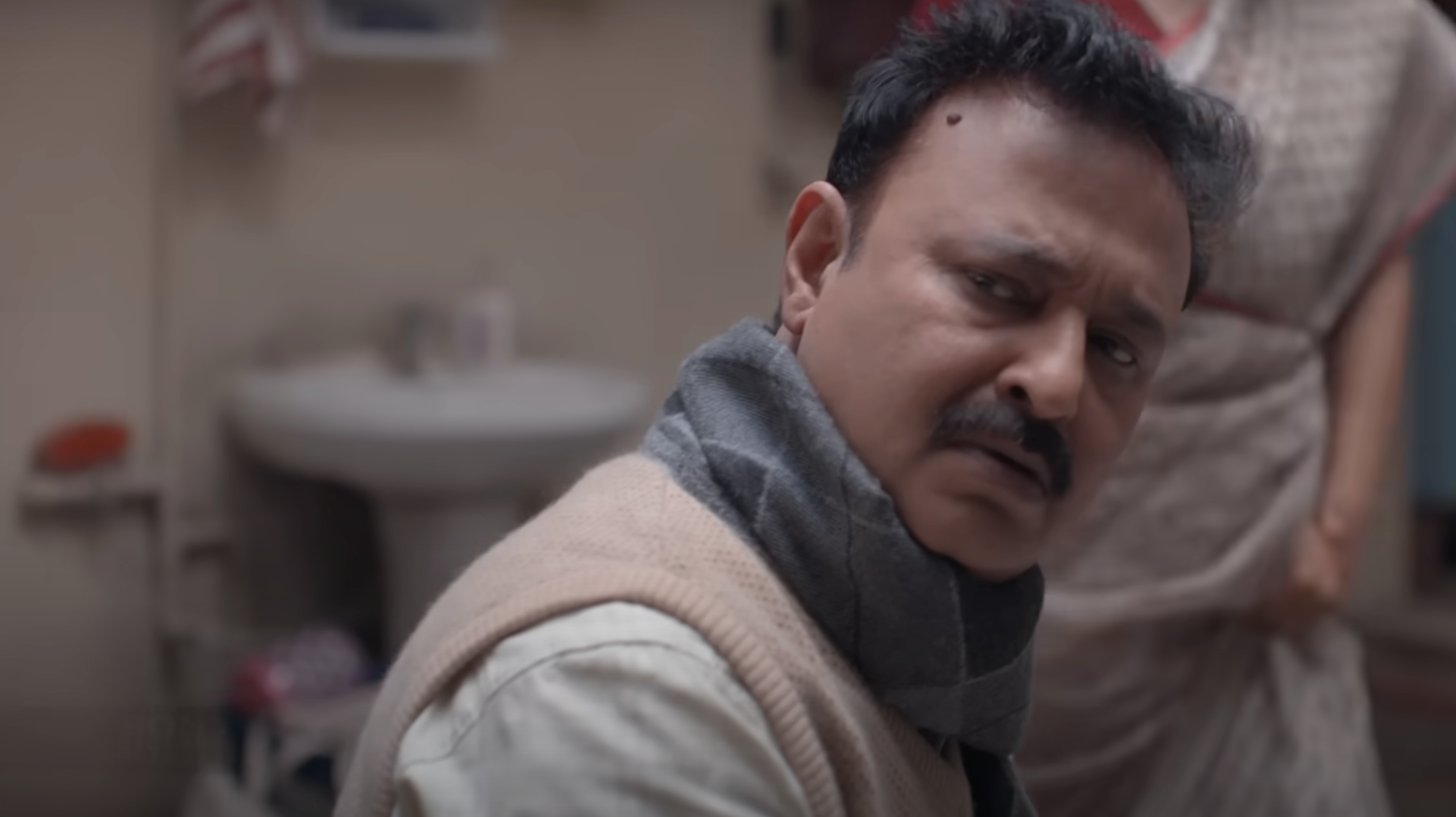Pandemic shows mostly always hit the exact pulse of their audience because the viewers were starving for comfort and familiarity as much as they were searching for escapism from a world that had become unfamiliar to them. Thus removed from the world and now having to contend with the outside world as much as the world of stories playing out within the screens, the excessive positivity or sentimentality tended to become either too sentimental or melodramatic.
The Shreyansh Pandey-developed show always had a keen eye for the quirks of the middle class and was able to mine joy and familiarity out of the mundane situations depicted on screen. But what truly made it stand out, at least in its initial two seasons, was its propensity to situate each episode on a single day or limit it to a single event. This is very familiar to a middle-class family that wearily deals with mundane issues on a day-to-day basis and has relationship quirks and evolving dynamics.
Within the hilarious circumstantial humor and witty dialogues that never became too flowery, there emerged character arcs amidst the archetypal personalities. Aman, the younger son, is a simpleton with an eye for creativity, while Annu is the one who is street-smart and also the gossip monger. Suman Mishra, the patriarch, is witty and yet wise in his jocularity and shares a similar love for gossip as his eldest son, while the mother, Shanti Mishra, is fiery and loving and holds the home together. It’s functional with shades of dysfunctionality so miniscule that middle-class Indian families would brush it off.
However, the show did try to experiment by going for an overarching plot in the third season related to Suman’s job at the electricity department, corruption within that department, and his honesty coming to the forefront, which also leads to a health scare. For Annu, the plot would be to choose his future and take up a job while contemplating his dreams. While the show had started to develop backstories as well as insert minor threadings of the plot through its anecdotes, it fully dialled in the plotty arcing in its third season.
It had a varied change of pace and a more sentimental offering as a result, but it also reinforced one of the core strengths of Gullak: the performances of the central cast, lending credence to the comfort one experiences after watching the show. However, unlike the previous occurrences, the audience now loves the characters and the family, rather than only watching the show to search for relatable situations within the anecdotes. The performances of Jameel Khan, Geetanjali Kulkarni, Vaibhav Raj Gupta, and Harsh Mayar as each of the four members of the family in descent are exquisite, softly laying in more layers to their personalities as time as well as circumstances progress and change, respectively.

The fourth season thus strikes a balance between the anecdotal and the overarching. It heavily leans back into what had worked in the first season while also firmly establishing all these characters as having grown and evolved within these past years and these seasons. Thus, Annu’s difficulties at his job while dealing with an ambitious boss don’t collide with Aman’s burgeoning growth as a teenager, his rebellious streak shining through in his uncontrollable witticism, landing him in trouble with his parents, as well as his slowly discovering the sweet pangs of attraction. But the core conceit still lies within the four walls of that house; the slightly acerbic relationship the Mishras have with their neighbor and gossip being the fodder that produces a temporary high, as well as masala chai, would do perhaps more.
The true strength of Pandey and the directors of “Gullak” season 4 is knowing where to push for sentimentality and where to pull back. In focusing heavily on the anecdotes, the overarching storylines would develop in the background, and thus, when the final episode, running for 45 minutes as opposed to the traditional 34 minutes, becomes almost an emotional climax for all the characters, it works because the denouement had been dependent on character progression—the evolution of all the characters and their dynamics with each other. For the parents, it’s in understanding their children and acknowledging their growth as well as their presence, while for the children, it’s in realizing the quirks and fallacies of the parents and learning to live with them all the same.
The narration of the Gullak (piggy bank) becomes incidental during moments of heightened emotionality, and while it describes the encapsulation of each episode, the sequences depicting Aman and his transgressions against his parents do tend to be slightly preachy as well as moralizing, almost reinforcing the “middle-class values.” It’s not one to be dismissed, but as the show incrementally evolves, resembling the family it is representing, perhaps the Gullak, too, should evolve. The fourth season also suffers from an overuse of background score, overlaying each moment with an added impetus for the audience that feels rather unnecessary considering the strong writing.
The impressive aspect of the show is that, in its attempts to be heartwarming and remain consistent, it never forgets to progress as well. The show can run the risk of treading water, as most long-running television shows do, but like photo albums, which point out anecdotes lending shape to the history of each family, Gullak too can evolve because anecdotes never truly run out within a family.





![Krisha [2016] : A Rotten Turkey](https://79468c92.delivery.rocketcdn.me/wp-content/uploads/2016/12/krisha-1-768x415.jpg)
![Promising Young Woman [2020] Review – Presents a vigilante in a fresh light](https://79468c92.delivery.rocketcdn.me/wp-content/uploads/2021/04/Promising-Young-Woman-1-highonfilms-768x379.jpg)
![The Big Sick [2017]: A Well Rounded and Deeply Felt Dramedy](https://79468c92.delivery.rocketcdn.me/wp-content/uploads/2017/09/big_sick_the_-_kazan_and_nanjiani-768x416.jpg)
![Wet Sand [2021] ‘Locarno’ Review – A Well-Crafted Microcosmic Tale of Love in a Prejudiced Society](https://79468c92.delivery.rocketcdn.me/wp-content/uploads/2021/08/Wet-Sand-2021-768x405.jpg)
